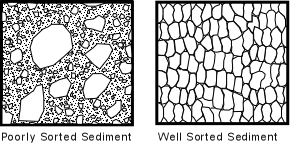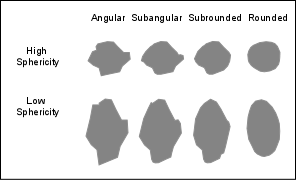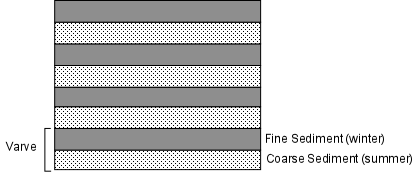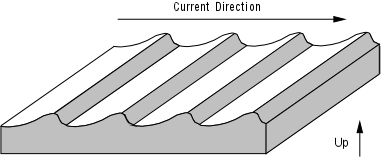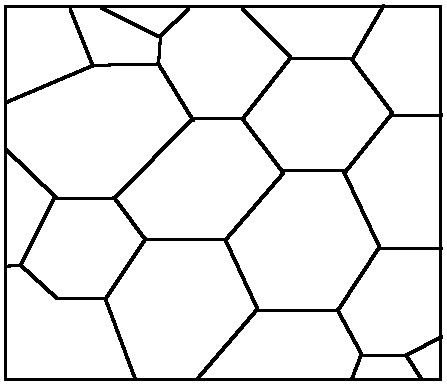Biochemical and Organic Sediments and Sedimentary Rocks
Biochemical and Organic sediments and sedimentary rocks are those derived from living organisms. When the organism dies, the remains can accumulate to become sediment or sedimentary rock. Among the types of rock produced by this process are:
Biochemical Limestone - calcite (CaCO3) is precipitated by organisms usually to
form a shell or other skeletal structure. Accumulation of these skeletal remains
results in a limestone. Sometimes the fossilized remains of the organism are preserved in the rock, other times recrystallization during lithification has destroyed the remains. Limestones are very common sedimentary rocks.
Biochemical Chert - Tiny silica secreting planktonic organism like Radiolaria and Diatoms can accumulate on the sea floor and recrystallize during lithification to form biochemical chert. The recrystallization results in a hard rock that is usually seen as thin beds (see figure 7.8a in your test).
Diatomite - When diatoms accumulate and do not undergo recrystallization, they form a white rock called diatomite as seen in the White Cliffs of Dover (see figure 7.22b in your text).
Coal - Coal is an organic rock made from organic carbon that is the remains of fossil plant matter. It accumulates in lush tropical wetland settings and requires deposition in absence of Oxygen. It is high in carbon and can easily be burned to obtain energy.
Chemical Sediments and Sedimentary Rocks
Dissolved ions released into water by the weathering process are carried in streams or groundwater. Eventually these dissolved ions end in up in the ocean, explaining why sea water is salty. When water evaporates or the concentration of the ions get too high as a result of some other process, the ions recombine by chemical precipitation to form minerals that can accumulate to become chemical sediments and chemical sedimentary rocks. Among these are:
Evaporites - formed by evaporation of sea water or lake water.
Produces halite (salt) and gypsum deposits by chemical precipitation as concentration of
solids increases due to water loss by evaporation. This can occur in lakes that have no outlets (like the Great Salt Lake) or restricted ocean basins, like has happened in the Mediterranean Sea or the Gulf of Mexico in the past.
Travertine - Groundwater containing dissolve Calcium and bicarbonate ions can precipitate calcite to form a chemically precipitated limestone, called travertine. This can occur in lakes, hot springs, and caves.
Dolostones - Limestone that have been chemically modified by Mg-rich fluids flowing through the rock are converted to dolostones. CaCO3 is recrystallized to a new mineral dolomite CaMg(CO3)2.
Chemical Cherts - Groundwater flowing through rock can precipitate SiO2 to replace minerals that were present. This produces a non-biogenic chert. There are many varsities of such chert that are given different names depending on their attributes, For example:
Flint – Black or gray from organic matter.
Jasper – Red or yellow from Fe oxides.
Petrified wood – Wood grain preserved by silica.
Agate – Concentrically layered rings
|
